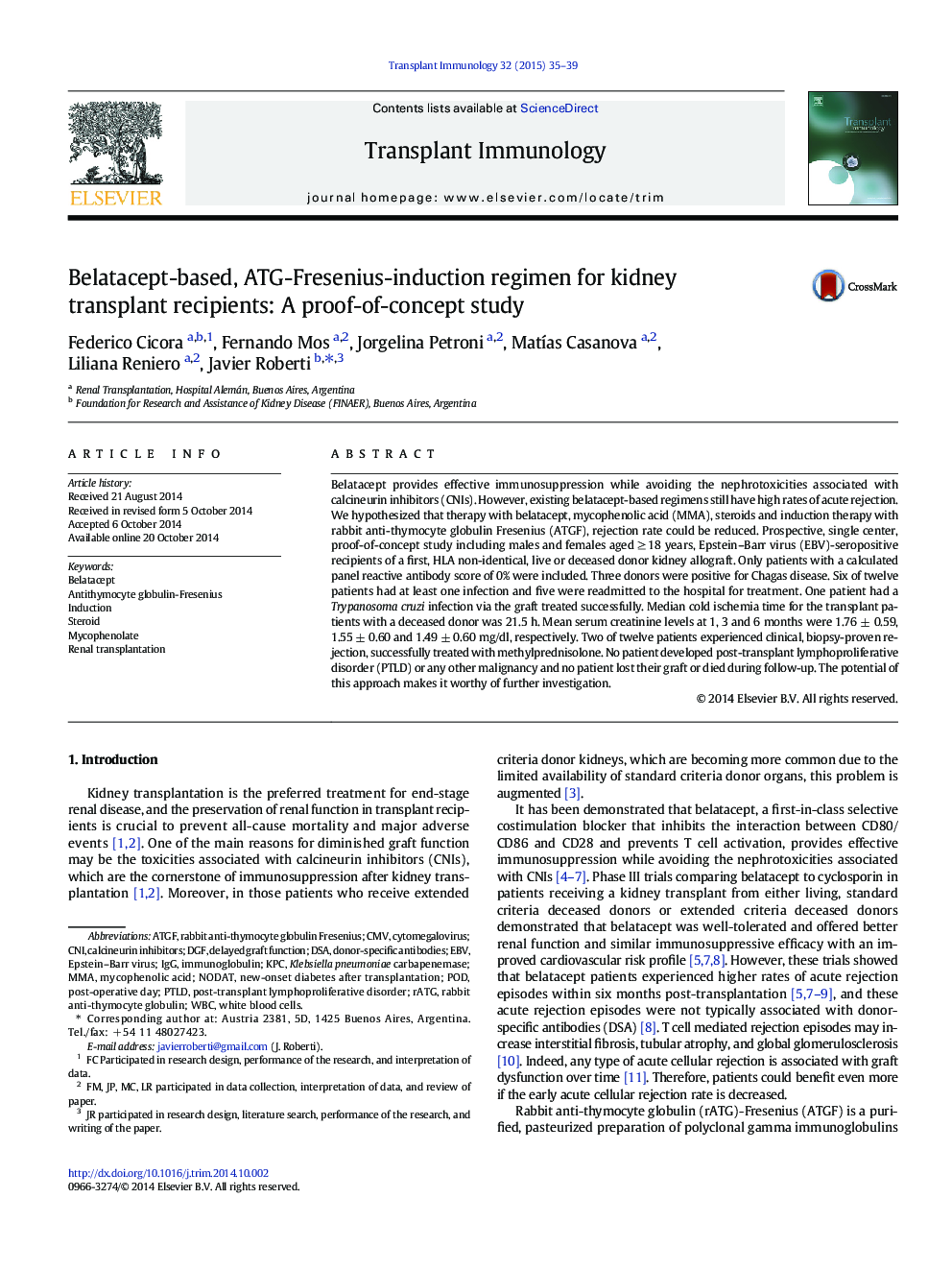| کد مقاله | کد نشریه | سال انتشار | مقاله انگلیسی | نسخه تمام متن |
|---|---|---|---|---|
| 3392039 | 1221183 | 2015 | 5 صفحه PDF | دانلود رایگان |

• Existing belatacept-based regimens have high rates of acute rejection.
• We hypothesized that with ATGF, rejection rate could be reduced.
• Prospective, single center, and proof-of-concept study
• Two of 12 patients experienced rejection, treated with methylprednisolone.
Belatacept provides effective immunosuppression while avoiding the nephrotoxicities associated with calcineurin inhibitors (CNIs). However, existing belatacept-based regimens still have high rates of acute rejection. We hypothesized that therapy with belatacept, mycophenolic acid (MMA), steroids and induction therapy with rabbit anti-thymocyte globulin Fresenius (ATGF), rejection rate could be reduced. Prospective, single center, proof-of-concept study including males and females aged ≥ 18 years, Epstein–Barr virus (EBV)-seropositive recipients of a first, HLA non-identical, live or deceased donor kidney allograft. Only patients with a calculated panel reactive antibody score of 0% were included. Three donors were positive for Chagas disease. Six of twelve patients had at least one infection and five were readmitted to the hospital for treatment. One patient had a Trypanosoma cruzi infection via the graft treated successfully. Median cold ischemia time for the transplant patients with a deceased donor was 21.5 h. Mean serum creatinine levels at 1, 3 and 6 months were 1.76 ± 0.59, 1.55 ± 0.60 and 1.49 ± 0.60 mg/dl, respectively. Two of twelve patients experienced clinical, biopsy-proven rejection, successfully treated with methylprednisolone. No patient developed post-transplant lymphoproliferative disorder (PTLD) or any other malignancy and no patient lost their graft or died during follow-up. The potential of this approach makes it worthy of further investigation.
Journal: Transplant Immunology - Volume 32, Issue 1, January 2015, Pages 35–39